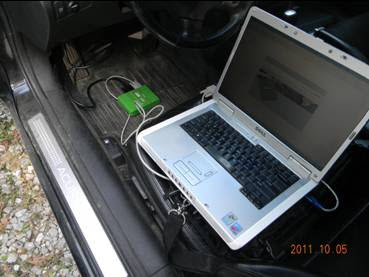Modern Methods of Determining Crash Severity
Automobile collisions result in damage to property and injuries to people. Compensation is sought through insurance claims, law suits, and product liability claims. Knowing when injuries are more or less severe than is warranted by the damage level involved in the collision is important information. This can help people involved on both sides of litigation or settlements.
Knowing when to take a collision case can be difficult. If you are lucky, there will be clear evidence of whether the occupants were seat belted, and if all of the safety components functioned as they should have. Pre-collision catastrophic failure of vital control components may be identifiable. Witness testimony may also help to provide details, although these accounts may be highly unreliable. All too often it is uncertain whether there was a safety system failure, if seat belts were being worn, or how severe a collision really was. Modern vehicles are equipped with event data recorders (EDR) that are a component of the safety system, normally a subcomponent of the airbag control module. These event data recorders record various information when a collision occurs. The amount of information recorded varies from manufacturer to manufacturer. The newer a vehicle is, the more likely it is to have advanced information. Some older basic EDR's may only provide change in velocity for sequential time frames, before, during, and after the collision. Different manufacturers have different time frames that are stored - some have extensive information for extended periods of time prior to the accident.

Typical Crash Data Retrieval Setup
Various information may be available including which occupants were wearing their seatbelts, the status of the throttle and braking, whether doors were closed, window status, velocities, steering input, light status, change in velocities, and other information.
This information can be used to determine the severity of a collision. The change in velocity is the biggest identifier of collision severity, as the level of deceleration can be determined from this. Excessive acceleration or deceleration is what causes injuries to us. If the EDR data shows that the rate of deceleration is small, then minor injuries can be expected. If high rates of deceleration are recorded, severe injuries would be expected.
How Is This Helpful?
Attorneys working for settlements for clients involved in automobile collisions could potentially receive larger settlements when the severity of the collision warranted them. Attorneys considering product liability claims can know from the onset whether a crash should have resulted in the level of injury that their clients present, whether the driver was driving safely and responsibly, whether seat belts were being worn, and other vital information that can qualify or nullify a case.
Can This Data be Obtained?
Yes. Mechanical and Safety Engineering has the certification and equipment to use the Bosch Crash Data Retrieval System to obtain crash data from most Chevrolet, Ford, and Chrysler vehicles. This can also be used to obtain data from select vehicles from Fiat, Lexus, Mitsubishi, Isuzu, Scion, Sterling, Suzuki, Saab, and Toyota. The coverage is constantly being increased. Other vehicle manufacturers have EDR's but these are not currently accessible via third party, only the manufacturer can obtain the data.
How is the Data Accessed?
Crash data is obtained connecting the Crash Data Retrieval Interface from Bosch to the air bag control module in the vehicle. This is accomplished through the DLC port found underneath many vehicle dashboards, where mechanics download trouble codes. The data is also accessible directly from the air bag control module by connecting the interface to the Airbag Control Module (ACM). The interface is hooked to the computer, and power is supplied to the ACM circuit of the vehicle. Computer software images whatever data is available on the vehicle. And this information is stored on the computer for future access.
Which Vehicles are Accessible?
General Motors vehicles that are model year 1994 and newer generally have accessible crash data from the ACM. The type of data available varies with the model year, newer vehicles having more extensive data available. Some General Motors vehicles have roll over sensors (ROS) that can provide information regarding whether a roll occurred, and rate of roll. GM vehicles may have information including seat belt status, air bag deployment status, accelerometer data, longitudinal change in velocity, lateral change in velocity, pretensioner status, whether the rollover sensor was triggered, accelerator pedal position, brake pedal position, throttle position, cruise control status, and other information.
Ford vehicles from model year 2001 onward may have accessible data in the restraint control module (RCM) and the power control module (PCM). Information available may include change in velocity over given time periods, accelerator position, brake status, engine RPM, stability control status, ABS status, traction control status, service brake status, yaw rate, roll rate, lateral acceleration, longitudinal acceleration, and steering position.
Chrysler vehicles from model year 2005 may have accessible data including throttle status, vehicle speed, airbag, pretensioner, and seat belt status, change in velocity, brake status, accelerator position, manifold pressure, and warning light status.
Vehicles manufactured by other manufacturers have a variety of similar types of information that may be accessible.
What is the Future of CDR?
Greater accessibility is expected in the near future due to a new NHTSA rule-49 CFR 563. This new ruling requires all cars manufactured in the U.S. to have access to the Event Data Recorder, even though there is currently no federal law requiring cars to be equipped with EDR's.











